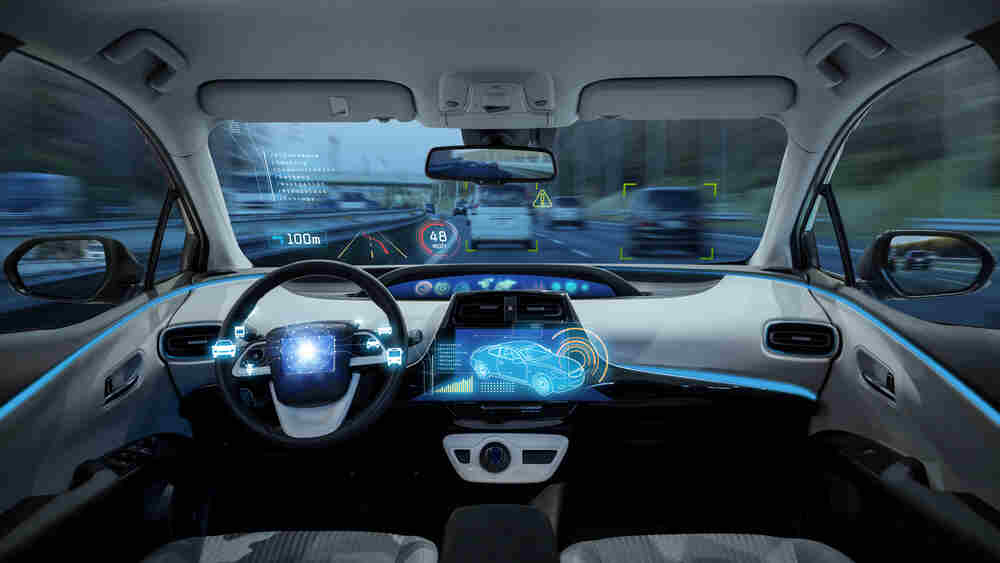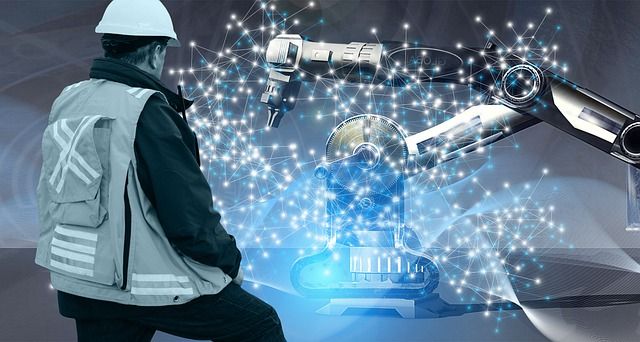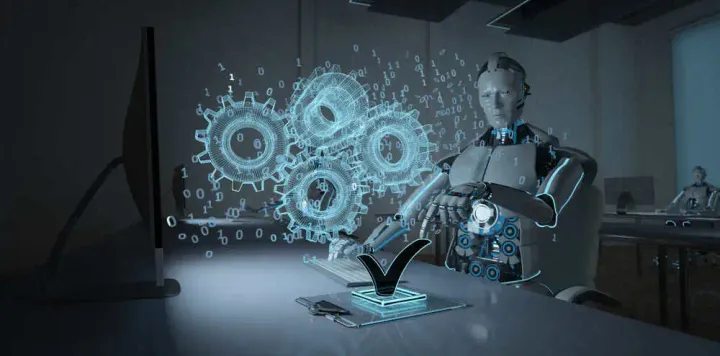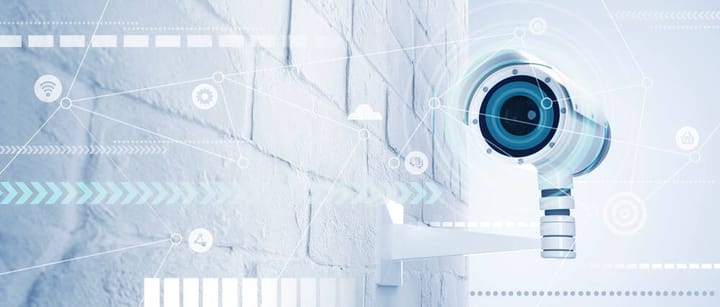Self Driving Cars – A Comprehensive Guide
Cars capable of driving autonomously have been in the realm of science fiction for decades. Thanks to the self driving cars that are on their way to transforming this sci-fi dream into reality. The time is pretty close when you will be just riding rather than driving your fully autonomous cars.

Imagine yourself getting into the car and just communicating its interface about your destination and freely texting your friends, reading a book, or taking a nap while letting your vehicle drive you to your given location. Or just visualize your car as a part of the rideshare network that earns money for you. In the morning, you hop in it. Since it is a weekday, it knows well and takes you to the office without even getting any instruction, drops you there and sets out for its job, collects fares all around the day, and you find it outside your office in the evening, ready to pick you up and take home. This sort of daydreaming is on its way to transforming into reality in the form of “Self Driving Cars” that would radically change the definition of how we get around.
Thanks mainly to the tech and automotive companies like Google and Tesla conducting in-depth research to make this dream a reality. According to a forecast, there will be more than 33 million driverless cars on the roads by 2040. Developed with the most innovative artificial intelligence technologies and 3D imaging, self-driving cars work autonomously to let the riders enjoy a freehand experience without any human driver. But has this digital era really developed such truly driverless cars that most of us have always dreamt of? If yes, then are they available in the market for personal use? If not, what level of automation is the currently available self-driving cars equipped with? And when and how will we see fully autonomous cars becoming the norm? Well, this is a topic that is up for debate. Different experts have different schools of thought on it, though the majority believes self-driving cars will take the roads by storm probably sooner than you think. Once considered sci-fi stuff, self-driving cars are now making their way to the streets of New York, San Francisco and beyond.
In this blog, we will walk through different aspects of self-driving cars, how they work, how close we are to a truly autonomous car and many more.
What is a Self Driving Car? Is there any Difference between a Fully Autonomous and a Self Driving Car?
The term self-driving is often interchangeable with autonomous, with a minor difference. A self-driving car is a vehicle that senses its environment and operates autonomously with little or no human input. At the same time, a fully autonomous car refers to a self driving car that is self-aware and capable of making its own choices without any human intervention. This fully autonomous car that can go anywhere without the presence of a human driver falls just under level 5 automation (discussed later). While a self-driving car will fall either under levels 3 and 4 (if they are semi-autonomous) or level 5 (if fully autonomous). A semi-autonomous self driving car is subject to Geofencing to create a fence or boundary around some geographic area. This virtual perimeter communicates with self-driving car's software to manage the car's movements within the fence. The car can't go outside the geofenced area. Whereas a fully autonomous self driving car can go anywhere, it likes and can pilot to the destination without human intervention.

Before any further discussion, let's look at the different degrees of automation of a car.
Levels of Driving Automation
SAE (Society of Automotive Engineers) has recently demarcated 5 levels of driving automation, implemented by the US. Department of Transportation.
- Level 0 – No Automation: This is 0-level driving automation that involves manual control. It requires a human driver to perform all the driving tasks.
- Level 1 – Driving Assistance: The cars in this category involve just one automated system. E.g., a car that automatically controls speed through Cruise.
- Level 2 – Partial Automation: This category includes self driving cars with ADAS (Advanced Driver Assistance Systems) technology. The vehicle can take automatic steering and acceleration control; however, it still needs a human driver to monitor all driving tasks and regain control at any time.
- Level 3 – Conditional Automation: The vehicles with 3rd level driving automation feature have environmental detection capabilities. The car can execute most driving tasks but still needs human override.
- Level 4 – High Automation: The self-driving car with driving automation of level 4 can perform all driving functions under specific conditions. It still needs human override and geofencing.
- Level 5 – Full Automation: A fully automated self driving car can perform all driving functions under all circumstances. It does not need any human involvement.
It means the car falling under level 5 doesn't need human input and can drive autonomously. However, level 3 and level 4 also fall under the category of self-driving cars, but they are semi-autonomous.
How Do Self Driving Cars Work?
The hubbub about driverless cars is making everyone wonder how actually do they work. Self-driving car technology is extraordinarily complicated, which is the main reason for their slow advancement. Let's have a brief overview of what makes a self driving car work autonomously.
- Sensors: Help the self driving car to “see” and create a map of its surroundings. The following are the sensors used:
- RADAR Sensors – observe the position of other vehicles in the surroundings.
- Video/Optical Cameras – help self-driving cars to identify the traffic lights, understand the road signs, trail other automobiles and monitor pedestrians.
- LiDAR sensors help the car measure distance and identify lane markings and road edges.
- Ultrasonic Sensors fixed in vehicle wheels spot curbs and other vehicles while parking.
2. Actuators – control accelerator, steering and brakes.
3. ML systems for predictive modeling.
4. Complex Algorithms with hard-coded rules recognize objects to avoid obstacles.
5. Processors to run the software.
Different automakers use different sensors to perform different functions. E.g., Toyota is famous for using LiDAR sensors, while Tesla Autopilot has switched from Radar to Optical sensors. The software processes the sensory input provided by sensors in driverless cars. Based on this information, the software designs a pathway and directs the self-driving cars' actuator. ML systems and complex algorithms help a self-driving car adhere to traffic rules and steer obstacles.

Autonomous Features Available in Self Driving Cars
Many of the autonomous features a true self-driving car would possess are already being incorporated into the semi-autonomous cars driven today. In a self driving car whether it is semi-autonomous as we see around at the moment or fully autonomous as expected to take the roads by storm in the future, the following features are must-to-have:
Adaptive Cruise Control (ACC)
This autonomous driving feature, also known as "Dynamic Cruise Control," is the most common in today's semi-autonomous self driving cars. The cars enabled with this feature have autonomous control on acceleration and braking, but the human driver handles the steering control. However, a fully autonomous car would be without a steering wheel, pedals and any other part that requires human input, as it would perform all driving functions by itself.
Initially, the driver inside the car sets a maximum speed which is precisely followed by the car when it observes a free road. However, when its sensors detect any other car crossing into its pathway, it brakes autonomously and adjusts its speed.
Audi’s Traffic Jam Assist is an adaptive cruise control system example. It performs its tasks slowly and can manage stop-and-start driving on overcrowded roads.
Emergency Brake
It is the autonomous safety feature of today's self driving cars. If the car detects some obstacle on its path or senses that the driver would not be able to slow down the car hurriedly, it autonomously applies emergency brakes to avoid the crash.
Lane Centering
This feature enables the self driving car to remain in the center within a marked lane by autonomously adjusting the steering. It is the fully autonomous feature as it doesn't require any human driver intervention to stay in the center of the lane.
Lane Keep Assist
It is another feature we experience in existing self driving cars. Unlike the Lane Centering feature, it demands a human driver's involvement to steer the car; however, when you are going to drift into another lane, it autonomously becomes active to stop you either by giving you some warning sign or taking control of the steering for a short period to push the car away from the other lane.
Autonomous Lane Change
Suppose you have selected a speed limit, and your self-driving car is heading towards its destination in adaptive cruise control mode with an active lane-centering feature. Suddenly, you come across a vehicle in front of your car driving at a speed below your chosen limit; the Auto Lane Change feature becomes active autonomously to overtake the slower driver. It pushes your car into the adjacent lane if it is clear and starts accelerating. When this autonomous car observes that the traffic situation of the lane it was in before is clear, it comes back to it.
Parking Assist
The self driving cars have self-steering technology that activates the parking assist feature leveraging its sensors and cameras to find a parking spot. In some autonomous cars, this feature holds level 5 automation as the cars do everything to get them parked, and the driver has to do nothing but sit back and watch. Whereas some self-driving cars will just steer to get parked, and the driver has to handle the gas pedal.
Summon
Some autonomous cars, for instance, Tesla Model 3, are equipped with Summon feature that helps you to automatically park your vehicle and reverse it up to 12 meters out of the parking space while you stand outside it. If you want to move this model beyond a driveway, use its beta feature, Smart Summon (if equipped). It is an FSD feature of the Tesla Self driving car that allows its owner to automatically reverse the car and get it back to them using the mobile app.
Autonomous Navigation
The autonomous car with a self-navigation feature integrates its ADAS feature and built-in navigation system to determine the destination and how to reach there. Autonomous navigation is rare in today's self-driving cars, and this is the closest feature of what a truly driverless car is meant. Tesla self-driving car has an auto navigation feature but just for limited highways.
Hands-free Steering
It is another unique feature of a self-driving car that allows you to free your hands from the steering wheel and fully depend on its ADAS feature. SuperCruise by General Motors and BlueCruise by Ford offer this feature in specific conditions, ideally on roads mapped thoroughly beforehand. Nevertheless, these autonomous cars are generally equipped with sensors that ensure the driver's focus is not drifting away. If you lose focus, the car will warn you to be attentive.
Above discussed are some significant features currently available in self driving cars we see around. But most features are only partially autonomous and require human focus to take hold of the car at any time. However, a fully autonomous self-driving car might be without a steering wheel, pedals or any other part that requires human input and would be equipped with more autonomous features.
Self Driving Car Companies
Since the self-driving cars are getting hype, several tech giants are affirming the concept and striving to get the maximum market share. The global market size for autonomous cars, which was 20.3 million units in 2021, is predicted to grow at a CAGR of 13.3% and hit 62.4 million units by 2030. A recently published report by Renub Research predicts that the autonomous vehicles market, which was worth $4 billion in 2021, will become $186 billion by 2030. To chase the holy grail of leading the autotech industry, many companies are ambitious to build self driving cars; however, their competencies have mostly remained elusive. Let’s walk through some top self driving car companies leading the race by introducing their driverless cars.
1. Waymo Inc.
In 2009, Google announced its self-driving car project intending to build a driverless vehicle by 2020 that could drive above 10 nonstop 100-mile routes. For this self-driving car project, Google's Alphabet Inc. established its sub-division named "Waymo," focusing on building driverless automobiles. In 2018, Waymo revealed its plan to partner with Jaguar to present driverless cars for sale by 2020. Today, we can see Google self-driving cars rolling out in San Francisco.
Waymo Self Driving Car
Waymo self driving cars are built with exclusive cameras and LiDAR to help them detect the distance from other vehicles, pedestrians, and other obstacles on the road. In 2020, the autonomous tech developer Waymo incorporated the advanced hardware system into the Jaguar I-Pace electric vehicles – a big move towards developing self-driving cars. In 2021, Waymo tested the reliability and functionality of its autonomous Jaguar I-Pace vehicles by offering rides to San Francisco residents, but with a safety driver to take control in case of emergency; and now, after the successful completion of this tester program, Waymo is offering self-driving ride-hailing service to carry its employees in San Francisco. This autonomous Jaguar I-Pace electric SUV, considered under SAE level 4 automation, carries employees anywhere in a geofenced “initial service area” without any human backup.
The autonomous vehicles by Waymo were the first to be tested on public roads in California, completing 20 million miles during their testing tenure. The accident ratio of Waymo self driving cars is far less than those of the competitors.
2. Tesla Inc.
Tesla Inc., a US-based automotive company, is well-recognized for manufacturing electric and self-driving cars. In 2014, the company introduced its first version of Autopilot with autonomous steering and braking. It could even adjust the speed limit autonomously. In 2020, Tesla announced a Full Self Driving capability program to build fully autonomous self driving cars.
Tesla Self Driving Car
Earlier, Tesla Self Driving Cars had just an Autopilot feature powering the vehicles for autonomous steering, accelerating and applying brakes within their lanes. Later in 2020, the Silicon Valley Automaker launched FSD (Full Self Driving) beta program in the USA. Since then, Tesla has been continuously extending access to its FSD beta version 10.69.2.2 by selling it, and today, it is owned by 160,000 people in USA and Canada, Elon Musk tweets. This software add-on, being sold at a whooping $15,000, automates many driving tasks. Tesla has recently relaunched its Enhanced Autopilot package worth $6000, in which it has probably incorporated all the features of its FSD (Full Self-Driving) package at a reduced price. FSD software enables Tesla self driving cars to detect and react to traffic lights and signals, match their speed with other cars, change their lanes, park without human assistance, and more. Hence FSD software complements the Autopilot feature to help Tesla Self Driving Car drive autonomously. Besides all the Advanced Driving Assistance Software (ADAS), Tesla Self Driving Car still needs to be fully autonomous.
Elon Musk, Chief Executive at Tesla, reveals that Tesla Inc’s ADAS will not get regulatory approval to take its self driving cars on the road in the current year, indicating that this automotive and energy company is still unable to convince the ruling powers that its self-driving cars can drive fully independently without any human driver. Musk admits that FSD still needs to reach the human level for some basic driving tasks.
3. GM’s Cruise LLC
General Motors is manufacturing self driving cars under the subsidiary “Cruise" to achieve $1 billion by 2025 while reducing road congestion.
Robo-Taxis
Cruise, the autonomous driving sector of General Motors, started rolling out its fully self driving Robo-taxis on the streets of San Francisco earlier this year to test its fully autonomous technology, as claimed. Initially, it has been offering free taxi service to the riders, but recently it has started charging for its service. These Super Cruise-enabled cars by General Motors, having SAE levels 4 and 5, leverage LiDAR map data, radars, real-time cameras, and GPS to allow self-driving. Robo-Taxi offers a hands-free driving experience in many areas. It can keep itself steered in the lane, adjust the speed autonomously, and auto-navigate. Currently, Super Cruise functions on only mapped-divided highways, but a couple of months earlier, GM announced an expansion in the Super Cruise Road network. The automaker revealed that it would soon add thousands of extra miles of roads in Canada and the USA. GM has planned to add 5000 more Robo-taxis to the US streets and expand its service to many other cities.
4. Apple Inc.
The tech giant Apple Inc. has struggled to develop semi or fully autonomous cars for many years under “Project Titan.” Kevin Lynch, the new VP of Apple technology, is monitoring the Apple self-driving car project along with the team. The main focus of Lynch is to push Apple’s car team to build a fully self driving car in the first version. Safety is the key puzzle. The engineering group working on Project Titan reports that they are emphasizing developing stronger safeguards compared to the driverless cars of Tesla and Waymo.
Apple Self Driving Car
Apple is ambitious to launch this driverless car by 2025, depending on the team’s competency to complete the autonomous system. However, some team members from Project Titan are skeptical about the timeline. If Apple, unfortunately, fails to achieve its target, it will either delay the launch of its self driving cars or sell the car with limited technology.
How will Apple Self Driving Car Work?
Bloomberg reports that Apple's driverless car will be without a steering wheel and pedals with a hands-off driving interior. One option is that the interior of Apple self driving cars might be same as that of the Lifestyle Vehicle from Canoo Inc., where the passengers would sit facing each other just like in a Limousine. As the car's interior would have no steering wheel, Apple is considering equipping its driverless vehicle with an emergency takeover mode.
The car project team is also considering the infotainment system in Apple self-driving cars. This system would have a huge touch screen resembling an iPad’s screen in the center of the autonomous car. The passengers could interact with it throughout their ride. The company has planned to integrate Apple's self-driving car with its existing devices and services.
Apple has achieved the key milestone on the “Chip” to be used in its self-driving cars to power its autonomous capabilities. The chip has been designed by the same engineering team that developed the iPhone, iPad and Mac processors. This Apple car chip, made up of neural processors, will be handling AI required for autonomous driving.
The above-discussed companies are among the main companies determined to widespread fully autonomous vehicles in the USA within two or three years. Although autonomous car technology has yet to be universally adopted, and mostly the big Silicon Valley Auto-tech companies are capitalizing on it, many new companies are also paving the way for a driverless transportation future. About 55% of small emerging businesses are ambitious to embrace self driving car technologies within two decades. Given that the self driving car companies, whether big or small, are striving to lead the race, one can be sure that the time is not far when the roads will be crowded with driverless cars.

Is a Self Driving Car Safe?
Nearly 400 crashes of self driving cars have been reported in 10 months, many of which are under investigation by NHTSA. Tesla Inc accounts for the majority of crashes. Reports claim that Tesla owners were using ADAS when their vehicles crashed into immobile emergency vehicles. In July 2022, California DMV accused the self driving car manufacturer Tesla Inc, of deceptive marketing practices regarding its Autopilot and FSD systems. California's Department of Motor Vehicles claims that the Tesla self driving car is unsafe to drive without a human driver ready to take control of the steering when needed. Another complaint against Tesla vehicles states that Tesla's ADAS costing $15,000 for FSD, is incapable of restricting vehicles on red lights and causes them to miss turns resulting in a crash.
However, experts believe that if a self-driving car is trained accurately, it can be safer than a human driver. According to NHTSA, 94% of road accidents are caused by human error, including reckless and distracted or impaired driving due to drugs or alcohol. On the other hand, a driverless car doesn’t drink or distract while driving and reacts faster than humans, so isn't it safer to rely more on technology?
Pros and Cons of Self Driving Cars
Pros
- A significant reduction in traffic accidents as above 90% of accidents occurs due to human error. With interconnected driverless cars, there would be fewer accidents.
- Humans would be free to constructively utilize their time while sitting back in their self-driving cars.
- Aged and disabled people who are not physically or legally fit to operate a vehicle alone can move freely in self driving cars.
- There would be fewer traffic jams as a network would interconnect autonomous vehicles. They could interact with each other and change their routes if they are about to encounter heavy traffic or construction on their way.
- They would probably eliminate the need for stop signs or traffic lights.
- Self-driving cars will ultimately lead to economic benefits. SAFE (Securing America’s Future Energy) anticipates that the mass adoption of self-driving cars will bring economic benefits worth $800 billion to the US economy in 2050 by reducing accident ratio, oil consumption and many more.
Cons
- Self driving cars would take over the jobs of taxi and delivery drivers as they can eliminate 4 million jobs, business insider reports.
- If two vehicles collide with each other on a road crowded with autonomous cars, who would be held accountable for that?
- There is a chance of an autonomous vehicle getting hacked by an outside party.
- Some privacy issues might occur as interconnected self-driving cars constantly communicate with each other.
- A self driving car, as we see today with level 2 automation, is not a thinking machine. It can't compete with the versatility a human driver inherits and follows the pre-programmed instructions. It can't adapt to new situations it may encounter on the road and gets confused, leading to deadly results. The braking problem of Phantom by Tesla is a perfect example of such results.
Challenges
Fully autonomous cars falling under level 5 automation are in testing phases in different parts of the world. Still, they are unavailable in the market for public use as they face legislative and technological challenges. As Kristin Kolodge, VP at JD Power says,
“The hurdles are multifaceted. Its technically challenging for the vehicle to handle all conditions, and certainly there are regulatory issues too which vary state-by-state, which makes it challenging.”
Currently, no proper rules and regulations exist for fully autonomous self-driving cars. So, taking these cars on public roads must be avoided until lawmakers design some regulations. According to Nik Miles, automotive expert at Mercedes, a possible legislative barrier might be based on revenue generated from bad driving. In some cities in the USA, around 100% of income is generated by traffic offenses, including speeding and ignoring signals. As autonomous cars are not supposed to break the law, how would these cities generate income?
The technology challenges include the high prices of LiDAR and RADAR. Moreover, if many self driving cars drive on the road, their LiDAR signals may interrupt each other. There needs to be more frequency range to facilitate the bulk production of self driving cars.
Experts believe there might be a consumer-acceptable barrier, too, as many would be skeptical about riding a driverless car.
When Will Self Driving Cars Be Common?
At present, the self driving cars taking the roads by storm fall under driving automation of level 2 and are semi-autonomous as they have been designed to support human drivers rather than replacing them altogether. Experts have different opinions about when a changeover to fully autonomous driverless cars will be achieved. The Insurance Institute for Highway Safety anticipates that 3.5 million driverless cars will be taking the roads of the US by 2025, and the number will hit 4.5 million by 2030. At the same time, the institute claims that these cars will not be fully autonomous as of level 5 but will operate autonomously under specific environments (Level 3 & 4 Automation). Mercedes is the first automaker to introduce level 3 automation in its DRIVE PILOT in the current year, 2022, and Germany is the first country to allow these semi-autonomous self-driving carsof level 3 on public roads. To launch this DRIVE PILOT in California and Nevada in the USA, Mercedes will apply for permission certification of its use on public roads and is hopeful of getting permission by mid-2023. However, Nik Miles, the automotive expert and broadcaster at Mercedes, admits that they are far away from a fully autonomous stage of level 5 cars and just evolving from level 2 to 3.
By far, fully autonomous self driving cars (level 5) are not legitimately allowed to purchase and take on a public road for personal use. We only have a few hints of the future transportation in many modern cars with ADAS features. Undoubtedly, ADAS can reduce the driver's burden, but it still needs input from the rider sitting behind the steering wheel to take hold of the car at any time. Many big names claim that they have developed fully autonomous driverless cars; however, these cars, such as Waymo and Robo-Taxis, are restricted to the testing phase and are yet to be available in the market for sale. No doubt, their testing stage promises a lot, but the experts anticipate a timeline of decades until the self driving cars become mainstream. However, Elon Musk believes that autonomous cars are the things of the future right around the corner and that fully autonomous self driving cars will be available for purchase soon. Whether it will happen sooner or later, experts believe self-driving cars will ultimately be the most dominant transportation mode.



